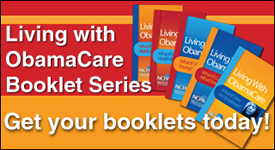Obama to Town Hall Gathering: The public health plan will be just like the US Postal Service
During Tuesday’s so-called “town hall” in New Hampshire (in which a schoolgirl warned the president that there were people outside holding signs that said “mean things” about his plan), the president gave the US Postal Service as an example to calm our fears about a new government program, the “public option,” destroying private health insurance.
The president said, “UPS and FedEx are doing just fine, right? No, they are. It’s the Post Office that’s always having problems.” (Laughter.)
He’s got that right. The Postal Service is going to need a taxpayer bailout of $7 billion this year. And despite the president’s claim, it doesn’t have competition in its core market of letter delivery. It’s illegal for FedEx or UPS to undercut the government’s price on letter mail. It’s also illegal for any other entity to send mail to a Post Office Box. And the Postal Service maintains that they – not you – are the real owners of your mailbox.

